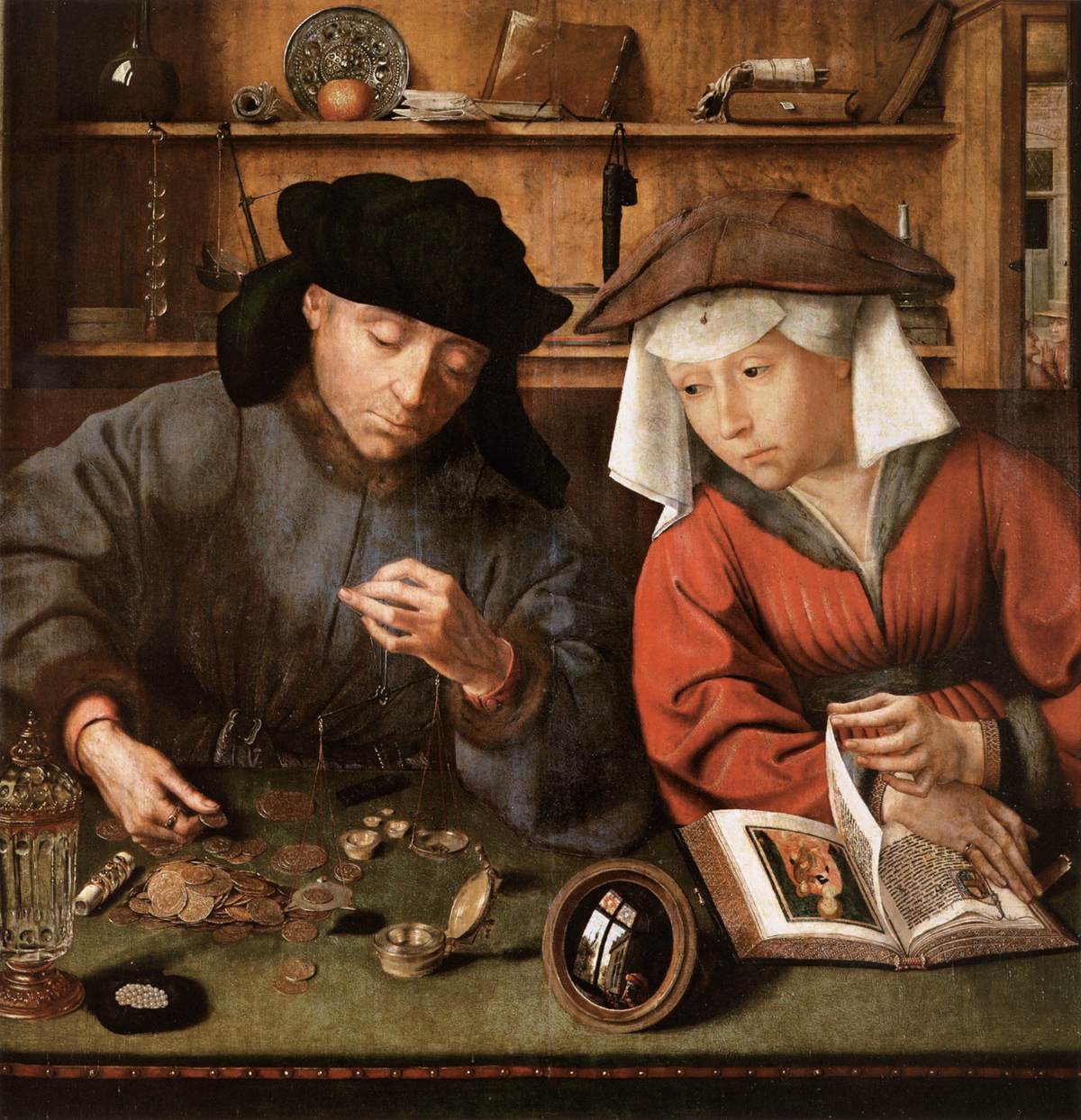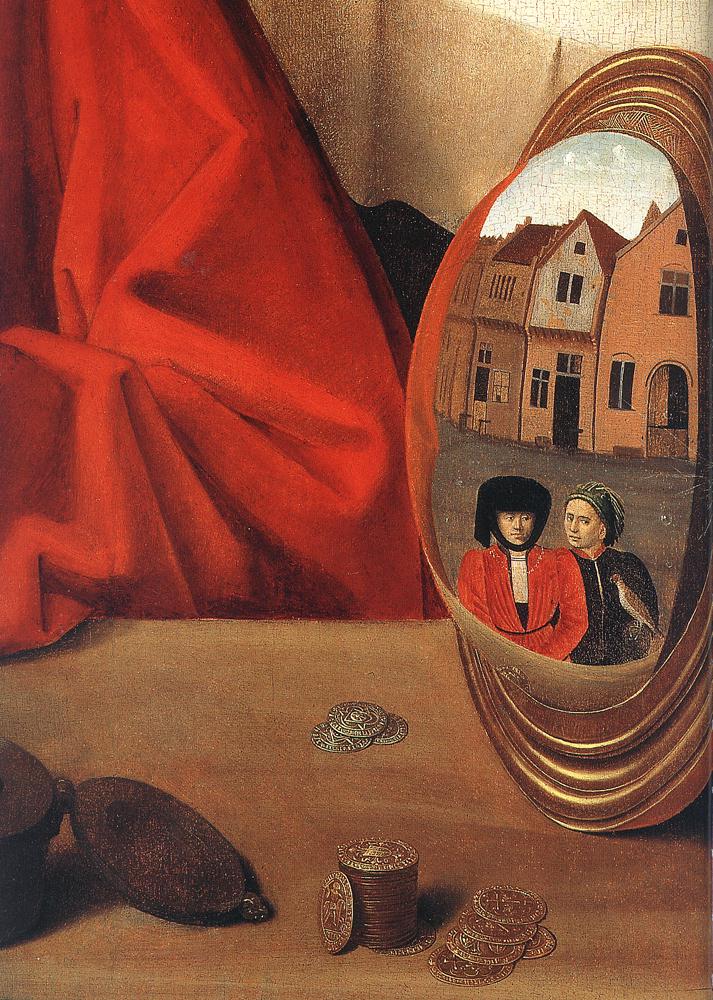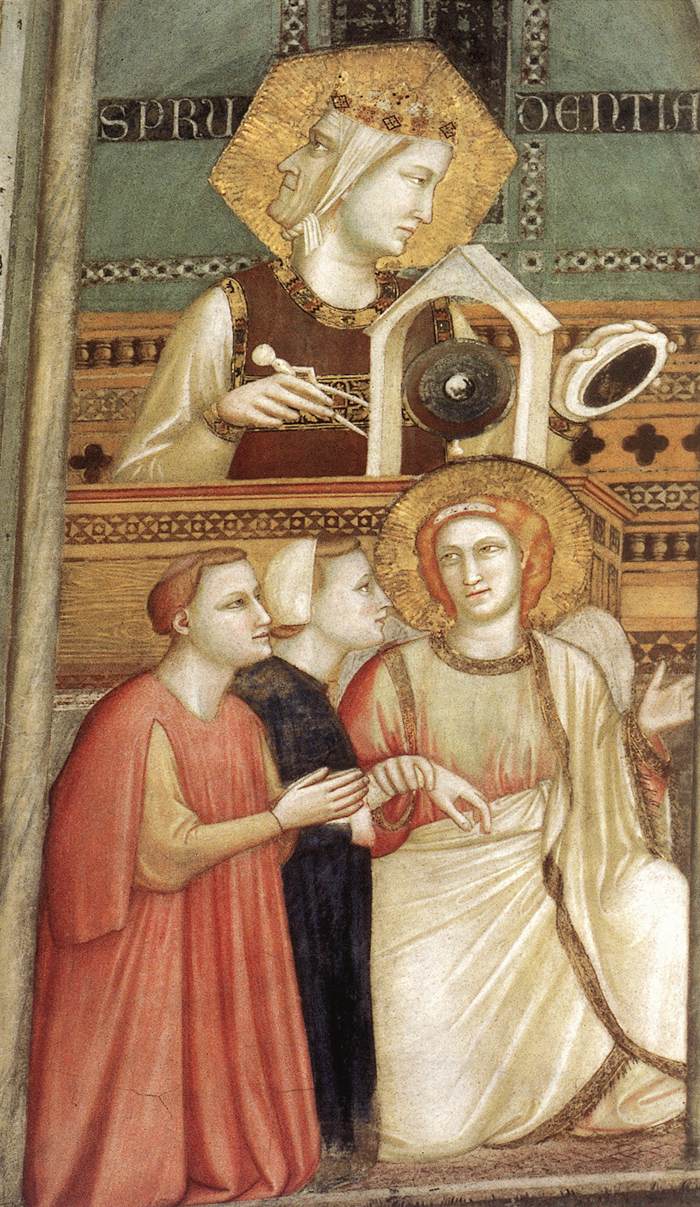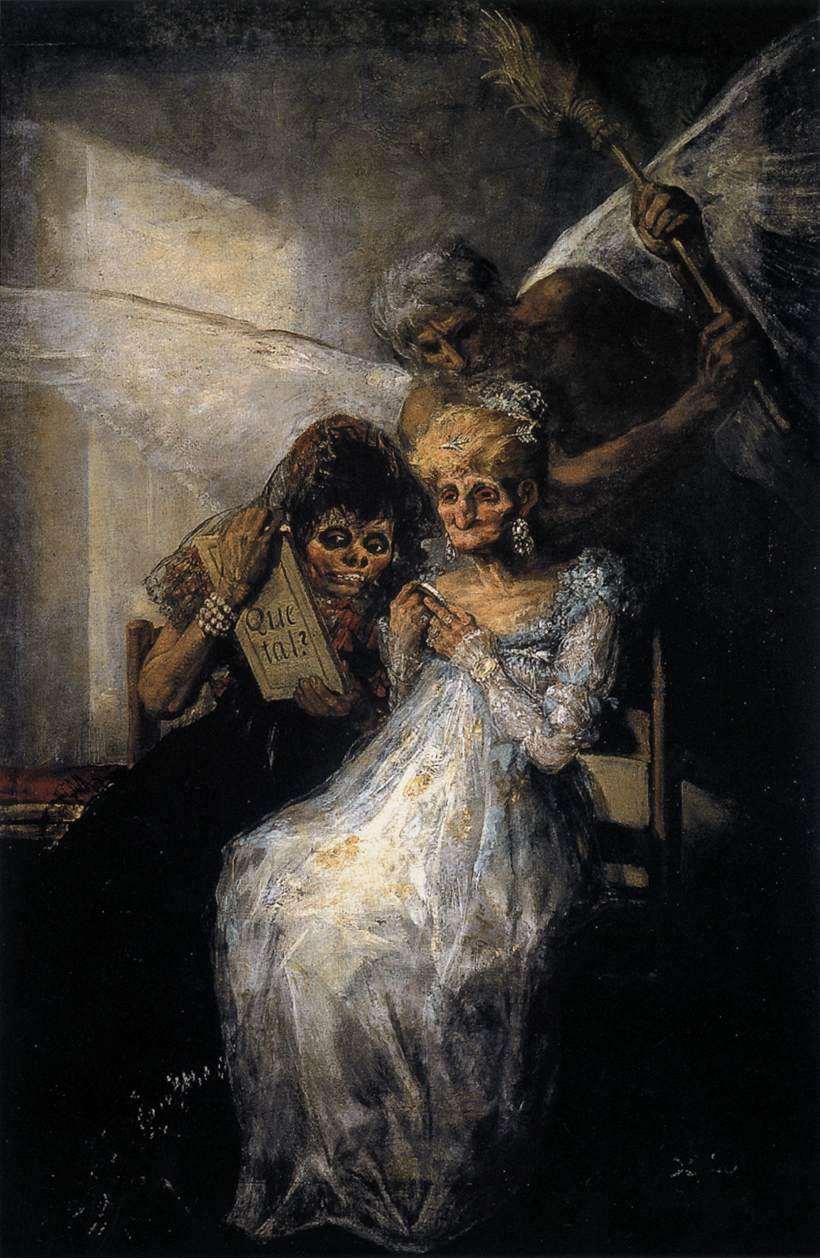.

In another moment Alice was through the glass, and had jumped lightly down into the Looking-glass room...

Young Woman in front of a Mirror (detail): Giovanni Bellini, 1515 (Kunsthistorisches Museum, Vienna)

The Penitent Magdalen: Georges de La Tour, 1638-1643 (Metropolitan Museum of Art, New York)

The Moneylender and His Wife: Quentin Massys, 1514 (Musée du Louvre, Paris)

The Moneylender and His Wife (detail): Quentin Massys, 1514 (Musée du Louvre, Paris)

Diane de Poitiers: Master of the Fontainebleu School, c. 1590 (Offentliche Kunstsammlung, Basle)

St. Eligius in his workshop: Christus Petrus, 1440 (Kunsthistorisches Museum, Vienna)

St. Eligius in his workshop (detail): Christus Petrus, 1440 (Kunsthistorisches Museum, Vienna)

Young woman behind a screen regarding herself in a mirror: Kitagawa Utamaro, 18th c.

Portrait of Giovanni Arnolfini and his wife (detail): Jan van Eyck, 1434 (National Gallery, London)

Franciscan Allegories: Allegory of Obedience (detail): Giotto di Bondone, 1330, fresco, Lower Church, San Francesco, Assisi

Les Vieilles or Time and the Old Women: Francisco de Goya y Lucientes, 1810-1812 (Musée de Beaux-Arts, Lille)

Self-Portrait in Convex Mirror: Parmigianino, c. 1524 (Kunsthistorisches Museum, Vienna)



19 comments:
I just love this post and the journey around mirrors that you've made.
Time and mirrors... have always haunted me.
Tom: What you've done here is given all of us a morning's delight and a lifetime's pleasure and source of inspiration, contemplation and wonder.
look, a mirror thrown away at one Belgrano's street (Belgrano is my neighbourhood in Buenos Aires)
Tom,
Thanks for this great gallery of views of views reflected in (illusion of) glass on two-dimensional plane. Take a look at the chapter on the two closet scenes in Reading the Unseen (which talks about Giovanni Arnolfini and his Bride. Meanwhile, another 'reflection' way out here. . . .
11.16
red-orange of sky above still blackness
of trees, silver of planet below branch
in foreground, wave sounding in channel
for example with respect to
index, indicates that
mass of body, distance from
center of body, light
silver of sunlight reflected in channel,
cloudless blue sky to the left of point
Two images from Orson Welles, 'Lady from Shanghai.' Scenes from the Hall of Mirrors where Welles unveils the plot with a 'mirror smashing' climax!
http://1.bp.blogspot.com/_KMYbdNu8FOw/S4qnC6HJOlI/AAAAAAAABMo/jdcCQNuvoiU/s320/lady+2.jpg
http://www.wellesnet.com/mirror5.jpg
Love your posts.
Curtis, many thanks, as ever, for the good eye. Especially grateful this time round, given the circumstances.
Time, that implacable Exterminating Angel whose outlines have been so strikingly delineated in recent posts by Julia at Meliora Latent, has haunted these image searches...
Julia, the link to your Belgrano post is a gift to us. Here's what I said to you over there:
"This is beautiful, and dizzying.
"A mirror-within-a-mirror-within-a-lens: the experience of dislocation or vertigo in such an image reminds us that one cannot 'hold a mirror up to nature' without also holding a mirror up to the mirror, and then another... and then accepting all the cracks in the several mirrors, which after all are merely 'perfect' (that is, perfectly limited) multipliers of what is, to begin with, a multiply fractured 'reality'..."
And speaking of Time's Exterminating Angel, that charmer turns up again in the penultimate painting on this present post -- the Time and The Old Women of Goya. (Something tells me Goya could never be considered a "vanity painter".)
And returning now for a command performance, of a sort...
The Mystery of the Anamorphic Skull in The Ambassadors: Hollow Bone or Exterminating Angel?
Also relevant: here's Artemisia's link to the great still capture from the Lady From Shanghai:
Lady from Shanghai, many-mirror'd.
(Thinking about shattered glass, apropos your second link, Artemisia, perhaps you know a painting by Jean-Baptiste Greuze in the Wallace Collection, London: The Broken Mirror, 1763?)
The use of mirrors in painting is of course a delicate and subtle trick painters have long employed to indicate something is there without actually pointing to it.
What is not directly shown is sometimes more important than what is immediately seen -- and, too, the trouble one takes in finding out that this is the case provides an exercise for the powers of attention, and such exercise, in turn, may itself comprise the ultimate pleasure in viewing.
On this subject we are fortunate to have a resident expert. Here is a passage from Stephen's book on the "offstage action" in Hamlet -- Steve is referring to the van Eyck Arnolfini Portrait, and the enlarged detail from it which can be seen as the seventh image in this present post.
"To begin with a portrait painted by Jan van Eyck one hundred fifty years before the time of Hamlet: Giovanni Arnolfini and His Bride shows, according to H. W. Janson, '[t]he young couple... solemnly exchanging marriage vows in the privacy of the bridal chamber.' There appears to be no one else present in the room, but, as Janson points out, reflected in a small round mirror 'conspicuously placed behind them' on the wall is the image of two other figures, one of whom must be the artist, since the words 'Joannes de eyck fuit hic' (Jan van Eyck was here) is written 'in florid legal lettering' above the date, 1434. The painter is a witness to this marriage ceremony, his painting a kind of 'pictorial marriage certificate'..."
Tom,
Thanks for noting that. . . .
seem to remember an exhibition along these lines, following the vanishing tram lines through the mirror and down the rabbit hole, but without the Utamaro, which is inspired
Thank you, Tom, I love your words in my post, as I told you there, now I think it's really complete. (Quiero decir que tus palabras era lo que le faltaba a ese post. Un nuevo y atrapante reflejo)
Which is Stephen book? It's very interesting what he said.
¡Saludos y espero que estés bien! ¿Cómo debemos entender "given the present circumstances"?
Tom:
Here's my post on this subject--
http://compassrosebooks.blogspot.com/2009/04/escher-parmigianino-ashbery-me.html
Curtis Faville
File,
Thanks for picking up on the "out of the box" image selection, the Utamaro...
Julia,
Stephen's book is "Reading the Unseen".
"Dadas las circunstancias actuales", fue una referencia indirecta al hecho de que estoy mal de salud, y que, en tal estado, todo este trabajo en el blog es, probablemente, bastante loco.
(Por otro lado, mis pocos amigos agradable aquí, como tú, ayúdame a dirigir mi mente lejos de mis problemas ...)
Artemisia,
Of course the Velázquez was one of the works I first considered in doing this post.
The issue of whether that framed object on the wall in the background of the painting is in fact a mirror, or perhaps a painting (of Philip and his wife), or whether, possibly, the whole scene before us is to be "read" as a reflection in a mirror -- this is, as you put it so well, a "multi-faceted entendre" of the first order.
As it happens, I have reserved that painting for a separate post, which may perhaps some day follow (touch wood).
I just found Stephen's book and I'll read all that google let me... Thank you!
Me temía que aludieras a problemas de salud. Te mando un beso y espero que podamos mantenerte entretenido (perhaps with merrier issues...)
Un beso vuela a usted también, y mucho de gratitud también, por todo ...
get well soon, Mr. Clark
Tom: Please remove my post about "Las Meninas" by Velasquez. I should not have included the sonnet. I look forward to your intended reflections on the Velasquez!
Thank you.
A
Beautiful, Tom - thank you.
Thanks Don, always good to hear from you, my friend.
Artemisia, at your request I am removing the sonnet quoted in your comment. But as the remainder of your comment contributed substantially to the thoughts that have been developing here, I hope you won't mind my retaining that here:
"The Jean-Baptiste Greuze painting is provocative and beautiful.Thank you for calling my attention to it! You must be familiar with this remarkable painting by Velasquez with its uncanny use of ‘reflection,’ and the mirror as multi faceted entendre.
"Las Meninas" by Velasquez
http://www.artchive.com/meninas.htm
Post a Comment